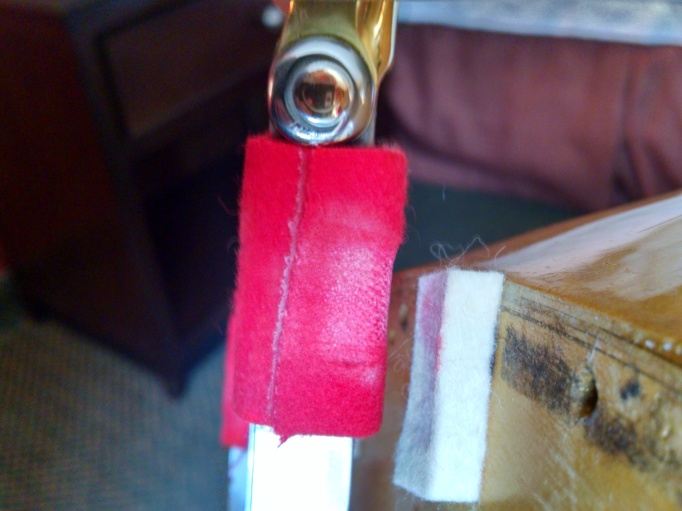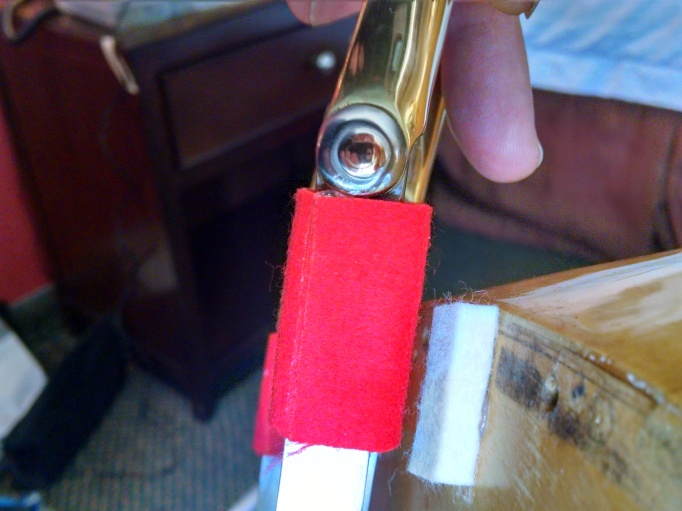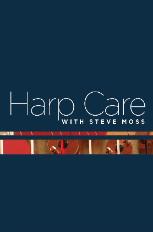
Yep. Time for new felts!
As part of a standard regulation, I always replace a harp’s pedal felts, the red pads that cover the pedals where they sit in the pedal slots. But why? Often, they look just fine. Sure, if they go too long without replacement, they can get torn up and really affect the harp’s playability, but short of that, what’s the point?
The point is that the felt becomes compressed over time, and this affects how the discs rotate and twist the strings. When pedal felts are new, they act like puffed up pillows, padding the harp pedal as it moves against the notches in the base. Over time, though, like pillows that have been slept on, the felts get pressed down. Spaces between the fibers of felt are reduced. In effect, this lengthens the pedal’s “stroke,” or full range of motion.

Even though it isn’t torn, this felt is ready to be replaced. Time and use have compressed it.

New felts increase the discs’ grip on the strings, eliminating buzzes and snaps
Even though the increase in stroke is only a few hundredths of an inch, this change affects the stroke of the discs in the mechanism, affecting how much they rotate and grip the strings. As the felt compresses, this discs’ grip is reduced, which can lead to snapping, buzzing, and compromised intonation.

A freshly replaced felt optimizes the action’s “stroke.”
Besides having your harp regulated on a regular basis, what can you do to prolong the life of your felts? Leave the pedals in the flat position when you are not playing. The pedals are connected to very strong springs which helps them move up when you want to move from sharp to natural, or from natural to flat. If you leave your pedals in a natural and sharp notch, the felts are pressed against wood, which causes compression over time, even if you aren’t playing your harp. If your move the pedals all the way up to flat when the harp is not in use, the pedal felts rest against the white slot felts. this padding reduces compression, prolongs the life of the felts, and thus the life of your harp’s regulation.
|
|


0 Comments